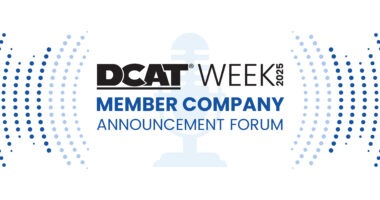Drug Pricing: Is a New Federal Agency Overseeing Drug Pricing a Viable Option?
Several US senators have introduced legislation to create a new federal agency, the Bureau of Prescription Drug Affordability and Access. How does this latest drug-pricing proposal stack up with others on the policy agenda?
Regulating drug pricing in the US: where it stands
Under the current system in the US, there is no direct government regulation of drug pricing. The US Food and Drug Administration (FDA), which oversees the safety and quality of drugs, does not have the authority to regulate drug pricing. The FDA, however, along with the US Department of Health and Human Services (HHS), is involved in measures to increase drug competition and transparency as a means to address drug pricing. The FDA, under former FDA Commissioner Scott Gottlieb and continued under Acting FDA Commissioner Norman Sharpless, developed and is implementing the Drug Competition Action Plan as a means to bring greater efficiency and transparency to the generic-drug review process and support generic-drug development as a way to increase drug competition. To date, the FDA has focused its efforts under the Drug Competition Action Plan in three key areas: (1) improving the efficiency of the generic drug development, review, and approval process; (2) maximizing scientific and regulatory clarity with respect to complex generic drugs; and (3) eliminating measures that delay generic-drug competition. Also, earlier this year (May 2019), the HHS finalized a rule to require manufacturers to disclose drug prices in direct-to-consumer television ads to increase drug-pricing transparency. It is also supporting measures to reform the drug-rebate system.
There have been other legislative proposals to address the cost of prescription drugs. Chief among them was a bill (H.R.3, The Lower Drug Costs Now Act ) that was introduced in the US House of Representatives earlier this year (September 2019). The plan, which has been criticized by industry trade groups, such as the Pharmaceutical Research and Manufacturers of America (PhRMA) and the Biotechnology Innovation Organization (BIO), would establish a fair price negotiation program, put in protections from excessive price increases under the Medicare program (the US healthcare program for people over the age of 65), and establish an out-of-pocket maximum for enrollees of Medicare Part D (the prescription drug program under Medicare).
Under this bill, the US Health and Human Services Secretary would be required to select and negotiate the prices of at least 25 negotiation-eligible drugs per year and would be authorized to negotiate prices for up to 250 negotiation-eligible drugs branded drugs per year by directly negotiating with manufacturers to establish a maximum price. Those branded negotiation-eligible drugs would be those that have been identified by the US federal government as costing the most to the federal government and for which there is no generic or biosimilar competition. The maximum negotiated price would be capped at 120% based on international pricing from the average price paid by Australia, Canada, France, Germany, Japan and the UK. If there is no international price, which is often the case with a new drug, under the bill the maximum fair price negotiated for a selected drug would generally be 85% of the average manufacturer price. The negotiated prices would be available to all purchasers not just Medicare beneficiaries. The House proposed legislation would also impose non-compliance fees on companies that do not enter into negotiations by implementing a tax on the manufacturer’s annual gross sales beginning with 65%, plus an additional 10% for every quarter the manufacturer does not comply, to a maximum of 95%.
The latest proposal for regulating drug pricing in the US
The latest drug-pricing plan that was introduced earlier this month (November 2019) in the US Senate is The Prescription Drug Affordability and Access Act that would create an independent agency—the Bureau of Prescription Drug Affordability and Access—tasked with conducting reviews of drug prices and determining an appropriate list price. If companies don’t comply with the Bureau-reviewed list price, the Secretary of Health and Human Services (HHS) would allow other entities to produce the drug, thereby voiding the companies’ government-granted exclusivity and providing access to a drug at the price determined by the Bureau. The bill is co-sponsored by Senators Cory Booker (D-NJ), Bernie Sanders (I-VT) and Kamala Harris (D-CA).
The Bureau is modeled after Canada’s Patented Medicine Prices Review Board, which determines if a drug is excessively priced, by comparing the price of the drug to that in comparable countries. Under the bill, when a drug manufacturer is preparing to bring a new drug to market, it would be required to submit detailed transparency information to the Bureau 45 days before, including: (1) the cost of research and development; (2) the cost of the drug and of comparable drugs in other countries; and (3) the federal investments that contributed to the discovery and production of the drug. The Bureau would review that information and other factors to determine an appropriate list price. If a drug manufacturer fails to adhere to the appropriate list price, the Secretary of HHS would allow other companies to produce a generic version of the drug, thereby voiding the company’s government-granted exclusivity.
In addition to conducting an initial review of a drug’s price, the Bureau would also conduct a review under other circumstances, including if the manufacturer wants to increase the list price by more than the rate of inflation. If the Bureau determines the price increase is not appropriate and the manufacturer doesn’t lower the cost within 30 days, the Bureau would have the authority to void any patent, clinical trial data, or other government-granted exclusivity connected to the drug in order to allow for cheaper versions of the drug to enter the market.
For drugs already on the market that have limited generic competition, the Bureau would set an interim appropriate price that would be equal to the median price of the drug in 11 comparable countries while a full review is conducted, giving patients immediate relief. The Bureau would also be required to ensure that patients have opportunities to meaningfully engage as it conducts its work, including by establishing a consumer advisory council. At least half of the members of the council would be patients or organizations representing patients.
Other measures for regulating drug pricing
Regulation of drug pricing in the US is a highly debated issue with both public and private-sector proposals as part of the policy debate. One such proposal from the American Medical Association (AMA), the US-based professional association of physicians and medical students, is to use arbitration to determine prescription drug prices, which it says builds upon existing policy in favor of drug-price negotiation and against a direct system of price controls. The AMA Council on Medical Services issued a report on such a proposal, whose recommendations were adopted at the 2019 AMA Interim Meeting, which was held earlier this month (November 2019). At the meeting, delegates adopted policy supporting the use of arbitration in determining the price of prescription drugs to lower the cost of prescription drugs without stifling innovation. It specified such arbitration processes should involve the following standards:
- Be overseen by objective, independent entities that have the authority to select neutral arbitrators or an arbitration panel;
- Require arbitrators to disclose of conflicts of interest and have safeguards to minimize actual and potential conflicts of interest to ensure that they do not undermine the integrity and legitimacy of the arbitration process;
- Be informed by comparative effectiveness research and cost-effectiveness analysis addressing the drug in question;
- Include the submission of a value-based price for the drug in question to inform the arbitrator’s decision;
- Require arbitrators to choose either the bid of the pharmaceutical manufacturer or the bid of the payer;
- Be used for pharmaceuticals that have insufficient competition, have high list prices or have experienced unjustifiable price increases;
- Include a mechanism for either party to appeal the arbitrator’s decision; the arbitration process should include a mechanism to revisit the arbitrator’s decision due to new evidence or data.
The AMA says that the use of arbitration also creates safeguards under legislative proposals that would use international drug pricing to serve as an upper limit in drug-price negotiations, set a drug’s price, or determine whether a drug’s price is “excessive” to trigger additional interventions by balancing the need for access while preserving market-based principles and incentives for innovation.






